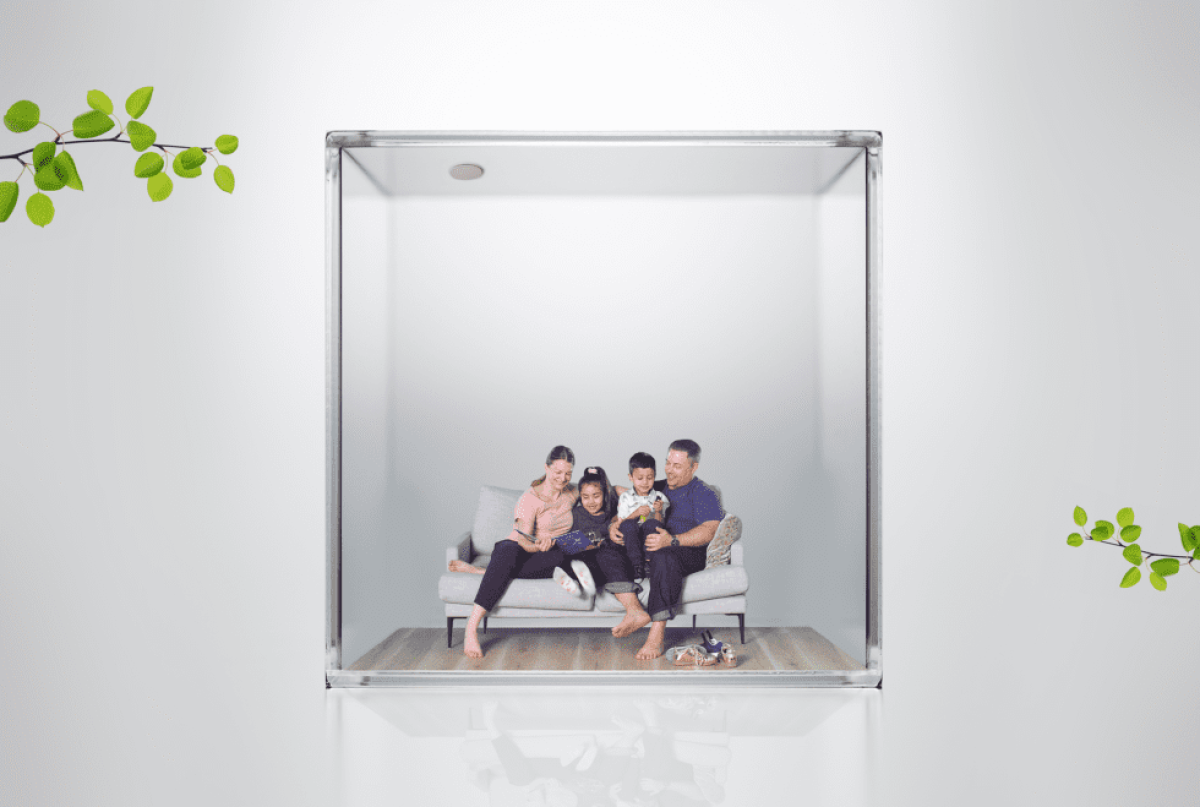What is a Home Ventilation System & What Does it Do For The House?

Any energy-efficient home with good indoor air quality is likely to have a home ventilation system. There’s often a bit of confusion around what exactly a home ventilation system is. That’s because there are multiple different types available, and a ventilation system could be anything from a single fan through to an interconnected system throughout the entire house.
But what’s all the fuss about ventilation? In this guide, we’re going to be explaining exactly what a home ventilation system is, how they work and why they’re important. So by the end, you’ll know exactly how to keep your home safe and healthy. Sounds like a breath of fresh air to us!
A home ventilation system is a type of controlled ventilation. It’s not just opening a window, which only ventilates part of the home and doesn’t let you just turn the ventilation on and off as you please. A home ventilation system has to be installed – usually in the roof space of your home. Through a filter, it introduces clean, dry air into the home, and lets stale air out.
Without adequate ventilation, the air in homes can become damp, stale and potentially even hazardous to health.
How do home ventilation systems work?
There are a few different types of home ventilation systems, which is where the confusion usually creeps in. As a general idea, they work by exchanging indoor and outdoor air, without wasting energy.
In this guide, we’re going to take a closer look at some of our most popular systems – heat or energy recovery and positive pressure systems.
Heat or Energy recovery systems
A heat or energy recovery system provides ventilation while improving the energy efficiency of a home, to reduce heating and cooling demands (and ultimately keeping bills down). Heat or Energy recovery systems recover an estimated 60-90% of the heat in exhaust air, so the warm air isn’t lost to the environment, and is instead used to keep the home warm and comfortable.
Essentially, this means you get fresh, warm air delivered consistently throughout the home.
Positive pressure systems
Positive pressure ventilation (PPV) systems work by gently introducing air into the home to increase air circulation. The result is that moist, stagnant air gets replaced with fresh, high quality air. The fan draws filtered air from outside via the roof cavity, pushing it to the home’s interior using a fan, duct and diffusers. PPV systems are usually installed in the roof space. Options for drawing outdoor air exclusively from the outside in the summer months, tempering heaters and room-to-room heat transfer allows you to make the most of this technology.
Your house & health: What a home ventilation system can do
Did you know that it wasn’t until the 1980’s that we began insulating our homes? Before that, houses were draughty and it was difficult to retain heat. With insulation came more energy efficiency (and warmer homes) which was great. However, the lack of gaps meant that things like VOCs (volatile organic compounds), toxins and moisture could build up more easily.
As a result, homes endured more dampness, mould, stale air and odours.
A home ventilation system can protect against these symptoms, by improving the indoor air quality and benefitting not only your home – but the health of you and your family, too.
Here are just some of the things a home ventilation system can reduce or eliminate.
• Allergies – a home ventilation system keeps allergen-causing substances out of the home. In summer, for example, when the pollen count is high and many people are more susceptible to hay fever, a ventilation system filters out larger particles for a cleaner indoor atmosphere. That means less itchy eyes and runny noses for the family.
• Respiratory illnesses – damp conditions are major triggers for asthma and other respiratory illnesses. An atmosphere with high humidity is a breeding ground for dust mites, and contact with them can lead to asthma attacks, eczema, etc.
• Damp air – a survey by My Health My Home found that 58% of homes experience condensation. This happens when there’s too much humidity and is especially common in the kitchen and bathroom. Condensation itself isn’t a huge issue, but if it builds up, it can lead to damp air, musty smells and peeling wallpaper.
• Mould – black mould occurs when a home is lacking ventilation over a long period of time. Mould, when untreated, can be dangerous to health. It produces irritants that can cause an allergic reaction and even asthma attacks.
• VOCs – volatile organic compounds are potentially dangerous gases that we can’t see. According to The Scientific Committee on Health and Environmental Risks, there are up to 900 chemicals inside our homes. These come from things like cosmetics and cleaning products, but you can protect against them with an adequate ventilation system.
• Furniture damage – moisture and mould can actually shorten the lifespan of furniture, wallpaper, flooring and more.
Take a quick quiz to choose your SmartVent system!
We can help you choose the right ventilation system for your home. Simply answer a couple of questions and our product selector will do the rest! If you have any questions or need some tailored advice, call SmartVent on 0800 140 150.